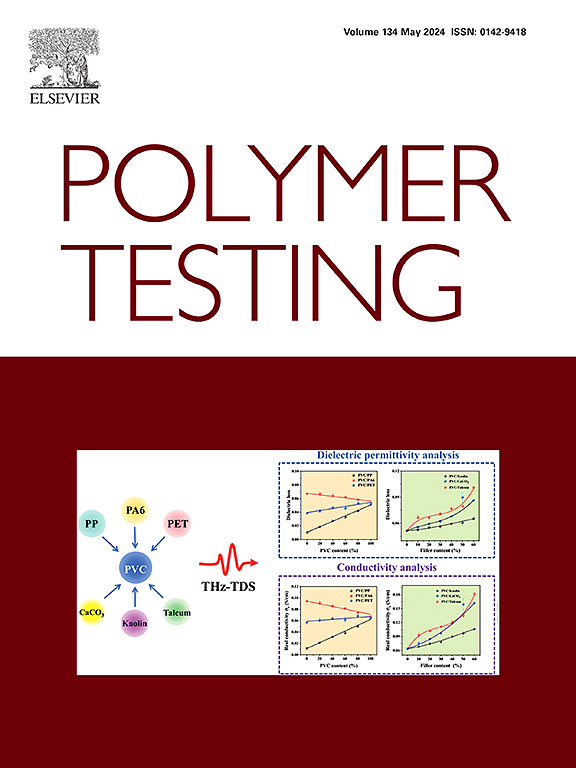Prediction of influence of helical structure on shape memory behavior of thermosetting resin useing molecular dynamics simulation
IF 5
2区 材料科学
Q1 MATERIALS SCIENCE, CHARACTERIZATION & TESTING
引用次数: 0
Abstract
The deformation process of helical structure is analogous to the stretching of spring which has shape memory capability. We propose introducing helical structure molecules into thermosetting resin matrix to investigate the influence of helical structure molecules on the shape memory properties of the resin matrix. The effects of helical structure on the thermomechanical properties and shape memory properties of epoxy and bismaleimide resins were analyzed by molecular dynamics. The results indicated that the introduction of helical structure molecules could enhance the tensile properties of thermosetting resin crosslinking network to some extent, and also reduce residual strain in the network. The epoxy resin and bismaleimide resin cell both contain one helical molecule, with mass fractions of 6.15 % and 5.95 %, respectively. The introduction of one helical structure additionally enhanced the shape memory recovery ratio of epoxy resin and bismaleimide resin by 12.63 % and 12.76 %, respectively, while promoting a faster shape recovery response in the crosslinking network.
求助全文
约1分钟内获得全文
求助全文
来源期刊

Polymer Testing
工程技术-材料科学:表征与测试
CiteScore
10.70
自引率
5.90%
发文量
328
审稿时长
44 days
期刊介绍:
Polymer Testing focuses on the testing, analysis and characterization of polymer materials, including both synthetic and natural or biobased polymers. Novel testing methods and the testing of novel polymeric materials in bulk, solution and dispersion is covered. In addition, we welcome the submission of the testing of polymeric materials for a wide range of applications and industrial products as well as nanoscale characterization.
The scope includes but is not limited to the following main topics:
Novel testing methods and Chemical analysis
• mechanical, thermal, electrical, chemical, imaging, spectroscopy, scattering and rheology
Physical properties and behaviour of novel polymer systems
• nanoscale properties, morphology, transport properties
Degradation and recycling of polymeric materials when combined with novel testing or characterization methods
• degradation, biodegradation, ageing and fire retardancy
Modelling and Simulation work will be only considered when it is linked to new or previously published experimental results.
 求助内容:
求助内容: 应助结果提醒方式:
应助结果提醒方式:


